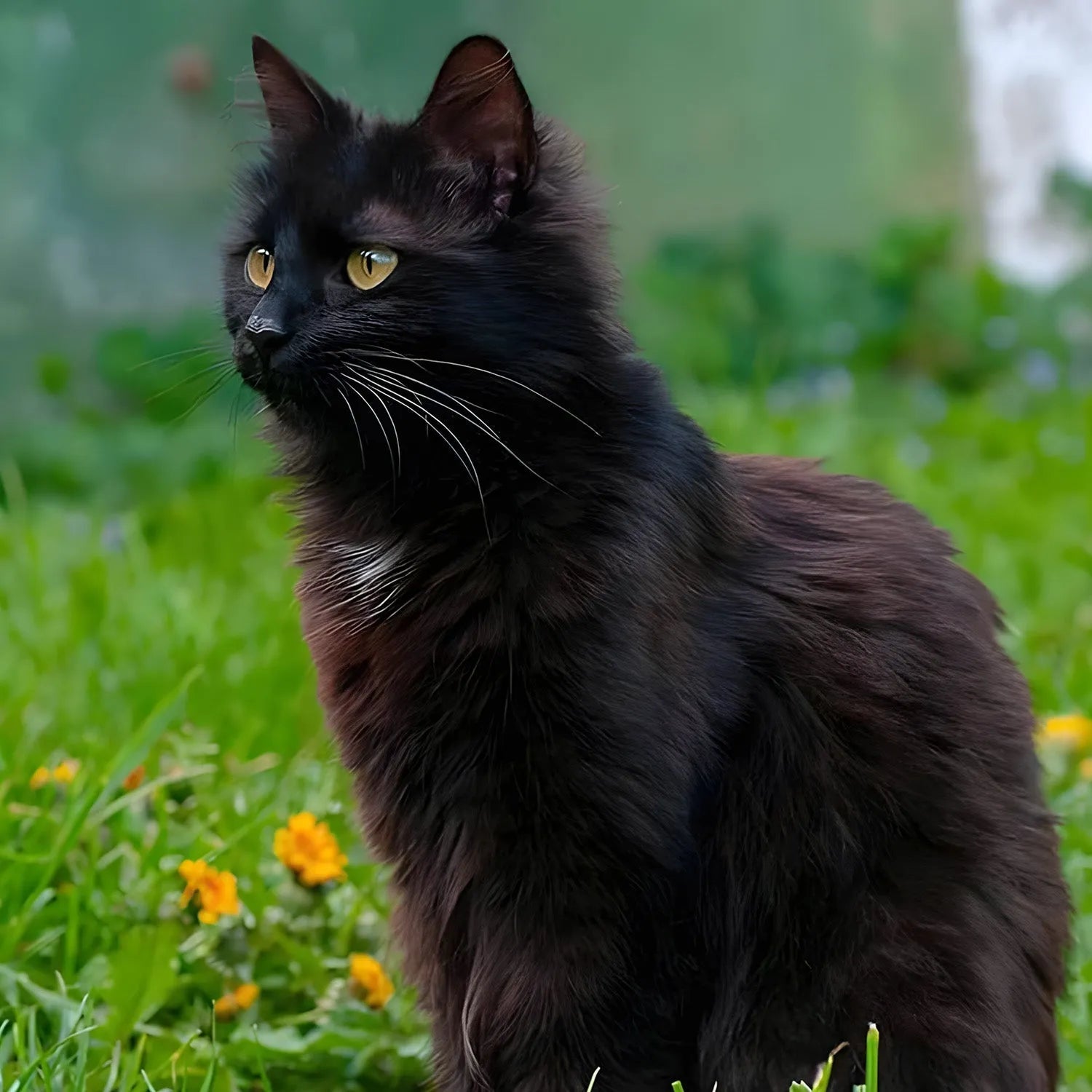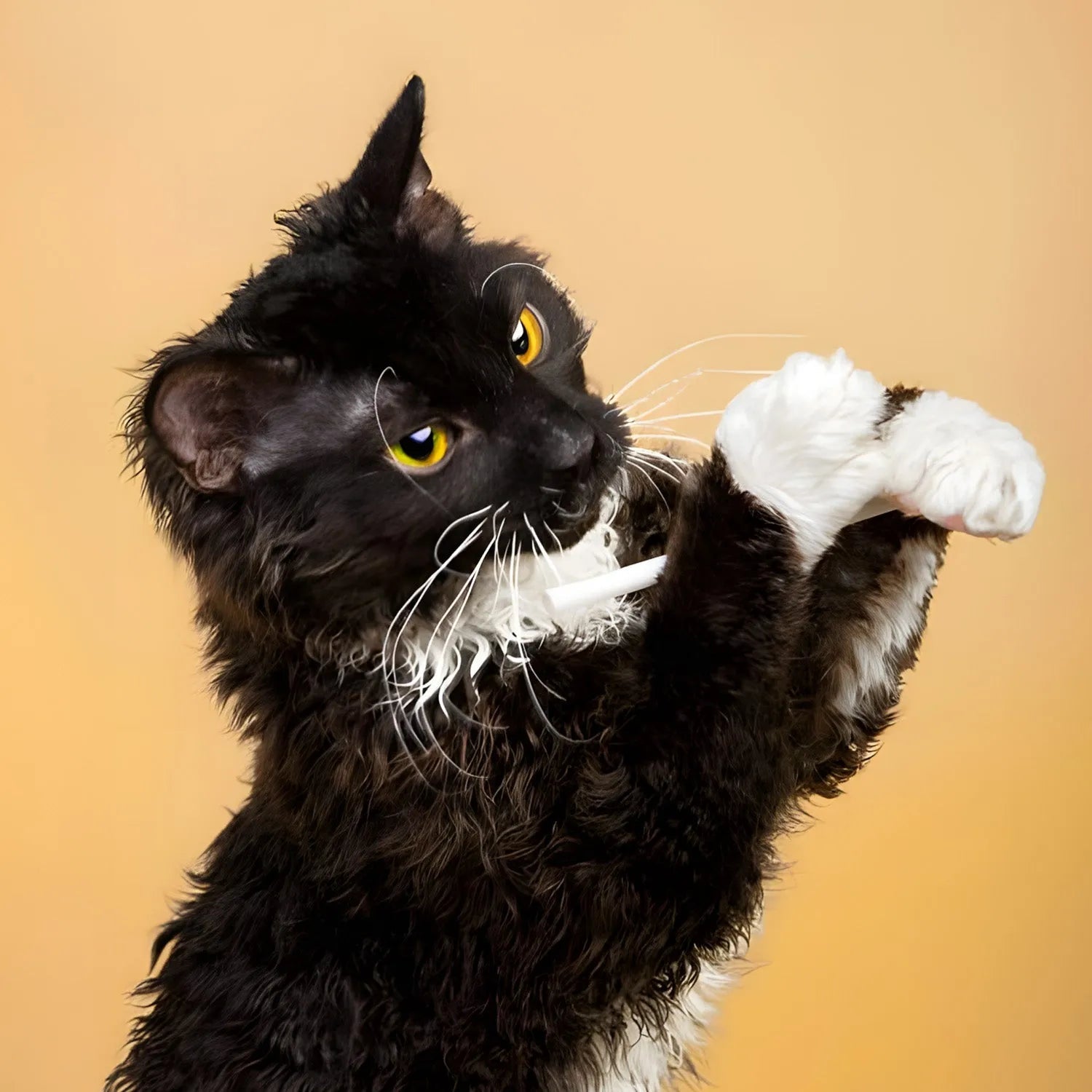Peterbald: The Sleek and Friendly Hairless Feline
Introduction
The Peterbald is a relatively new breed, known for its sleek, hairless (or nearly hairless) body, and its lively, friendly personality. With its exotic appearance, the Peterbald is often compared to the Sphynx, though it has its own unique characteristics that set it apart. These cats are highly social, forming strong bonds with their families, and they love to be involved in all aspects of daily life. Despite their distinctive lack of fur, Peterbalds are full of warmth and affection, making them an excellent companion for those who appreciate an engaging and loyal pet. In this blog, we’ll explore the Peterbald’s lifestyle, behavior, grooming needs, and how it interacts with humans and other pets.
Ratings (1-5)
-
Environmental Adaptability: 3
-
Food Consumption: 4
-
Need for Companionship: 5
-
Trainability: 5
-
Tolerance of Children: 5
-
Ease of Domestication: 5
History and Origins
The Peterbald cat breed originated in Russia in the 1990s. The breed was developed in St. Petersburg (hence the name "Peterbald") by crossing the hairless Donskoy with Oriental Shorthairs. The goal was to create a sleek, hairless cat with the elegant body shape of the Oriental Shorthair and the affectionate, social personality of both parent breeds. The result was the Peterbald—a striking, graceful cat with either hairless or very short, velvety fur. The breed has been steadily growing in popularity since its creation and is recognized by several cat associations.
Physical Characteristics and Colors
Peterbalds are known for their sleek, slender bodies, long legs, and large, bat-like ears that give them a distinctive look. While many Peterbalds are hairless, some are born with a fine coat of fuzz, a suede-like texture known as a "peach fuzz" coat, or short, bristly hair. Over time, some Peterbalds may lose their fur entirely, while others retain a light coat throughout their lives. The breed comes in a variety of colors and patterns, including solid colors, tabby, and even colorpoint variations.
Their almond-shaped eyes can come in various colors, often reflecting their Oriental Shorthair ancestry. Despite their delicate, elegant appearance, Peterbalds are muscular and agile, with strong, long legs that allow them to move gracefully and climb with ease.
Lifestyle and Behavior
Peterbald cats are incredibly social and affectionate, forming strong bonds with their human families. They are often described as "dog-like" because of their loyal and friendly nature. Peterbalds love to be involved in whatever their owners are doing, whether that’s following them from room to room, curling up on their laps, or participating in playtime. These cats thrive on companionship and do not like to be left alone for long periods, making them ideal for families or individuals who spend a lot of time at home.
Despite their sleek, often hairless appearance, Peterbalds are warm, both in personality and literally. Because of their lack of fur, they tend to feel warm to the touch, and they enjoy snuggling up to their owners for warmth and comfort. Peterbalds are playful and curious, and they enjoy exploring their environment, climbing cat trees, and playing with interactive toys. They are intelligent cats that need mental and physical stimulation to stay happy and healthy.
Trainability and Intelligence
Peterbalds are highly intelligent cats and can be trained to follow commands, perform tricks, and even walk on a leash. They respond well to positive reinforcement techniques, such as treats and praise, and they enjoy learning new things. Peterbalds are naturally curious and love to explore, making training an excellent way to keep them mentally stimulated. They can quickly learn games like fetch, and many Peterbalds enjoy puzzle toys that challenge their problem-solving abilities.
Because of their intelligence and social nature, Peterbalds are easy to train and are often eager to please their owners. They are also known for their ability to communicate with their humans, using a variety of vocalizations and body language to express their needs and desires.
Social Behavior and Human Interaction
Peterbald cats are incredibly social and thrive on human interaction. They form deep bonds with their owners and are happiest when they are involved in every aspect of daily life. Peterbalds are affectionate and love to cuddle, often curling up on their owner’s lap or snuggling under blankets for warmth. Their playful and interactive nature makes them ideal companions for families or individuals who want a cat that is always by their side.
Peterbalds are also known for being vocal, and they will "talk" to their owners using a range of chirps, trills, and meows. They enjoy engaging in conversations with their humans and will often follow their owners around the house, eager to be part of whatever is happening.
Compatibility with Children and Other Pets
Peterbalds are excellent companions for children due to their gentle and tolerant nature. They enjoy interactive play and are generally patient with children’s antics, provided they are treated with respect. Their playful nature makes them great playmates for kids, and they often enjoy games like fetch or chasing toys.
In addition to being good with children, Peterbalds also tend to get along well with other pets, including dogs, as long as they are properly introduced. Their sociable and adaptable nature allows them to integrate well into multi-pet households, and they often enjoy the company of other animals as much as they do humans.
Grooming and Care
The grooming needs of a Peterbald vary depending on the type of coat (or lack thereof) the cat has. Hairless Peterbalds require regular baths to remove oils from their skin, as they lack the fur that would typically absorb these oils. Use a gentle, hypoallergenic cat shampoo to avoid irritation. Cats with a "peach fuzz" or very short coat may also benefit from occasional baths, but they generally require less maintenance than completely hairless cats.
In addition to regular bathing, Peterbalds need to have their ears cleaned frequently, as they are prone to wax buildup. Regular nail trimming and dental care are also important to maintain their overall health. Because Peterbalds lack a protective coat, they are more sensitive to temperature changes and should be kept indoors in a warm environment.
Health and Lifespan
Peterbalds are generally healthy cats, but like all breeds, they can be prone to certain genetic conditions. Some health issues that may affect Peterbalds include dental problems, skin conditions, and susceptibility to sunburn (in hairless individuals). Regular veterinary check-ups and a balanced diet are essential to maintain their health.
With proper care, Peterbalds typically live 12-15 years or more. Regular monitoring of their skin for irritation, maintaining a healthy diet, and ensuring they have a warm, comfortable environment will help ensure a long, happy life for your Peterbald.
Environmental Adaptability
Peterbalds are indoor cats that thrive in a warm, comfortable environment. Due to their lack of fur, they are more sensitive to cold temperatures and can easily become chilled in drafty or cold areas. Providing them with warm, cozy spots to sleep and keeping them indoors will help them stay healthy and comfortable. Some Peterbald owners even provide their cats with sweaters or blankets during colder months.
While they are well-suited to apartment living, Peterbalds need plenty of mental stimulation and opportunities for play. Cat trees, climbing shelves, and interactive toys will help keep them entertained and engaged.
Feeding Requirements
A balanced diet is crucial for maintaining the Peterbald’s health and energy levels. High-quality cat food that is rich in protein is recommended. Fresh water should always be available. Because Peterbalds are active and playful, they may require more calories than less active breeds to support their energy levels. Consult your veterinarian for specific dietary recommendations based on your cat's age, weight, and health needs.
Monitoring their diet to prevent obesity is important, as Peterbalds can be prone to overeating if not properly managed.
Conclusion
The Peterbald is a unique and affectionate breed that brings energy, beauty, and companionship to any household. Their strong bonds with their human companions, combined with their playful and interactive nature, make them wonderful pets for families and individuals alike. If you're looking for a cat that will form a deep, loving connection with you and provide years of companionship, the Peterbald might be the perfect fit for you.
For more information about other cat breeds and pet care tips, stay tuned to our blog!
References:
-
Smith, R. (2021). "The Sleek and Social Peterbald Cat." *Journal of Feline Studies*, 35(3), 215-230.
-
Thompson, A. (2020). "Caring for Your Peterbald Cat: A Comprehensive Guide." *Cat Lover’s Magazine*, July issue, pp. 25-33.
-
Harris, E. (2019). "Health and Wellness in Peterbald Cats." *Veterinary Journal*, 79(2), 123-137.


